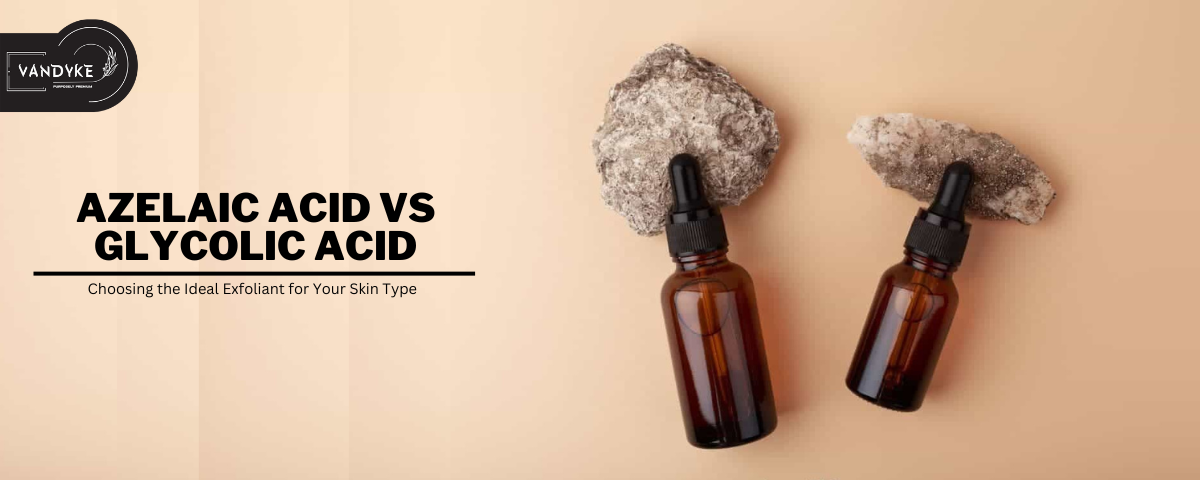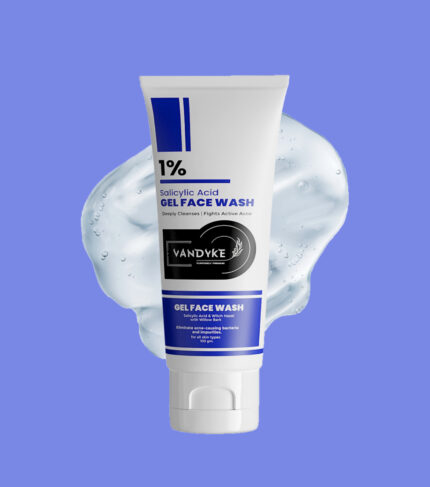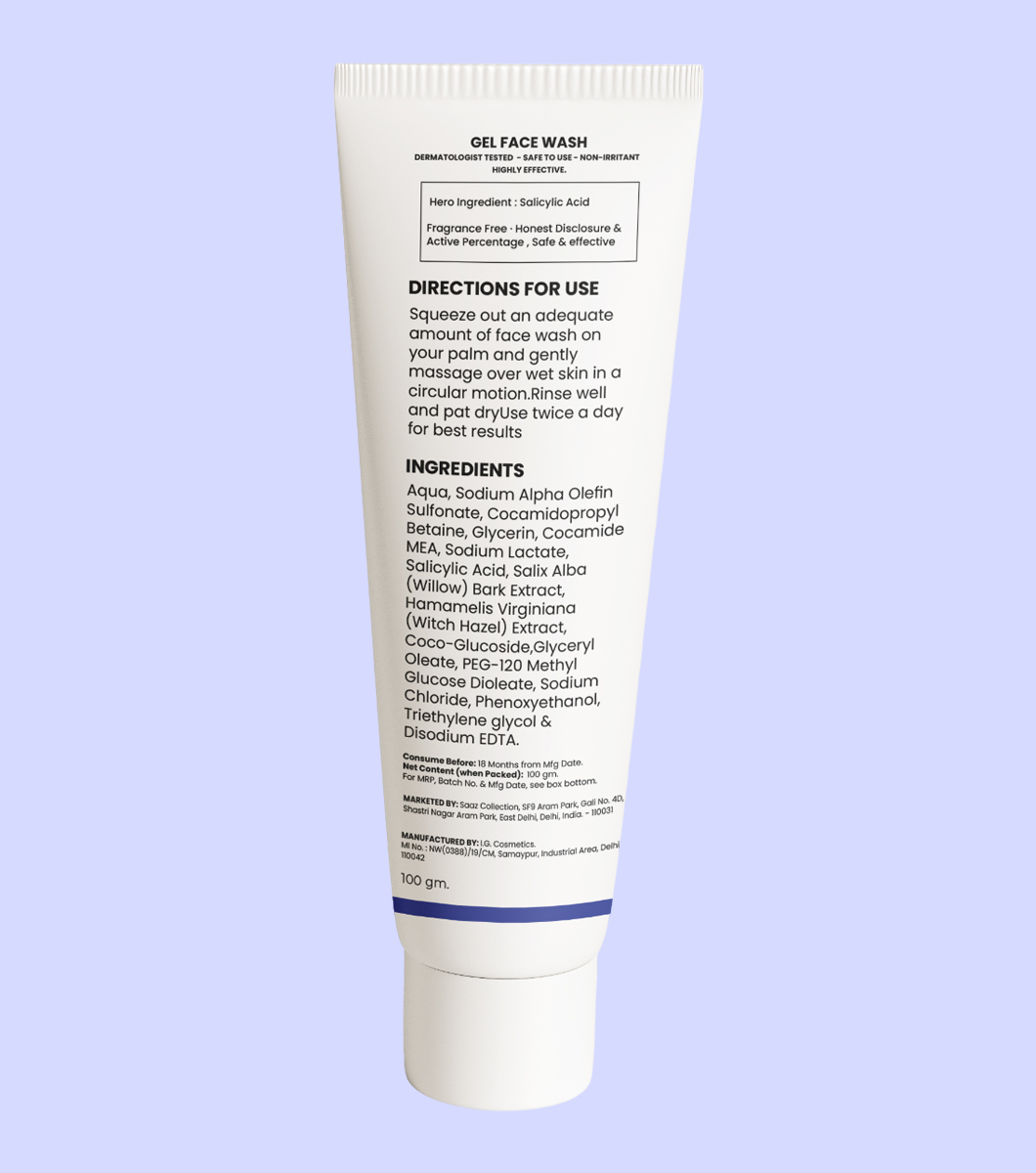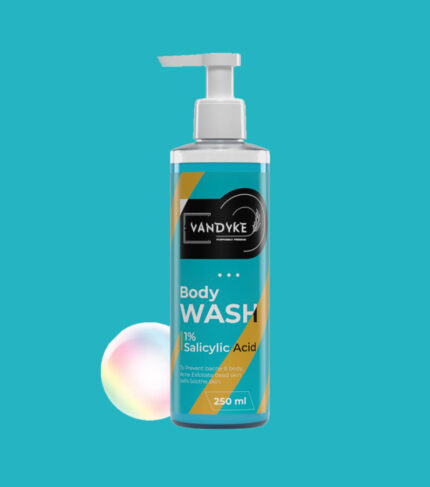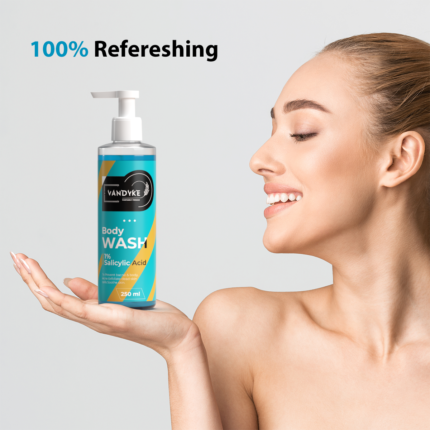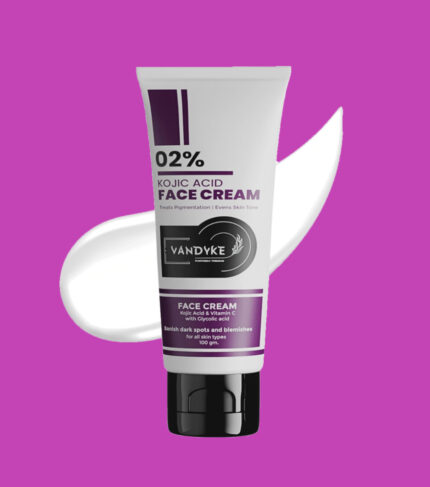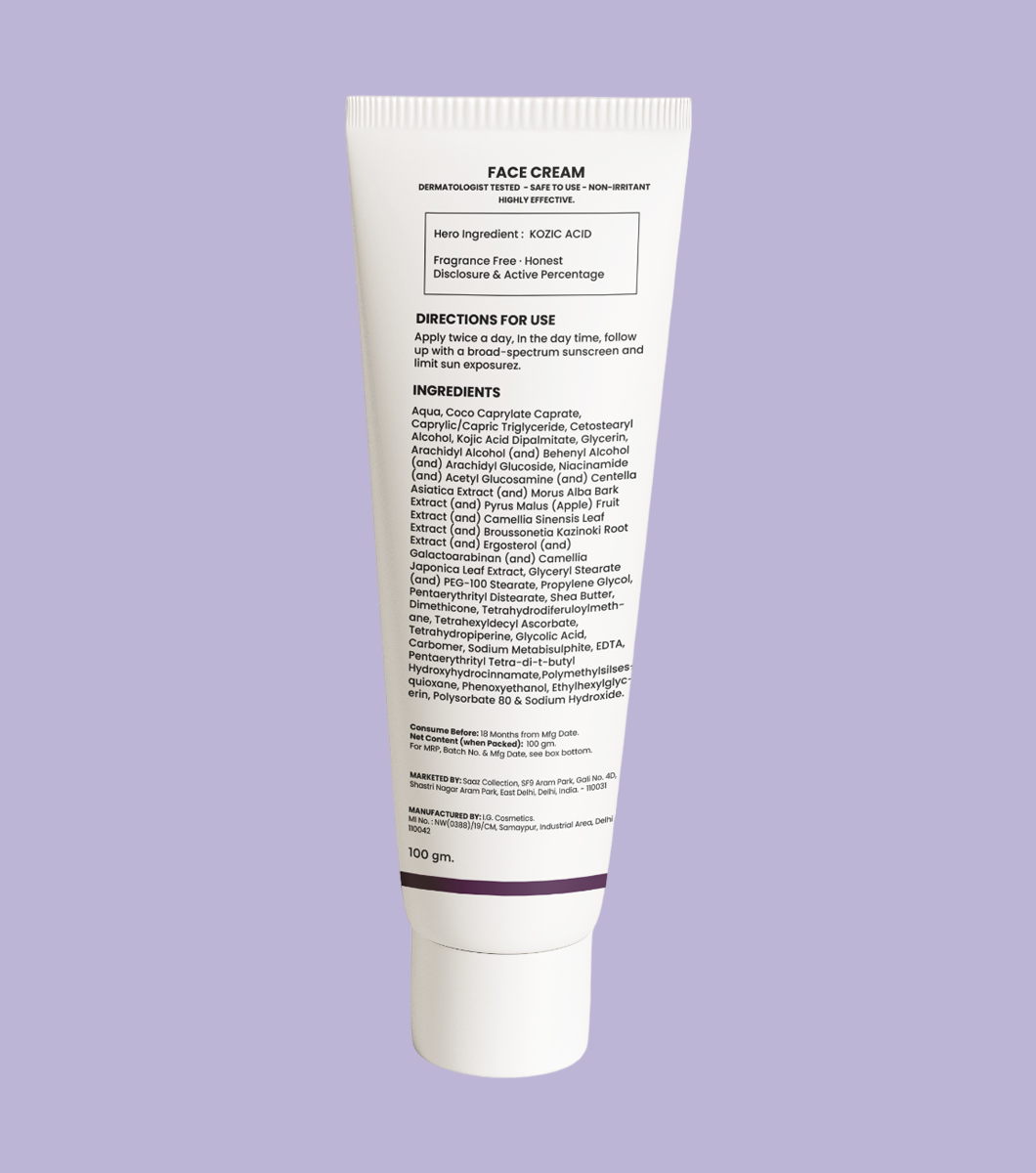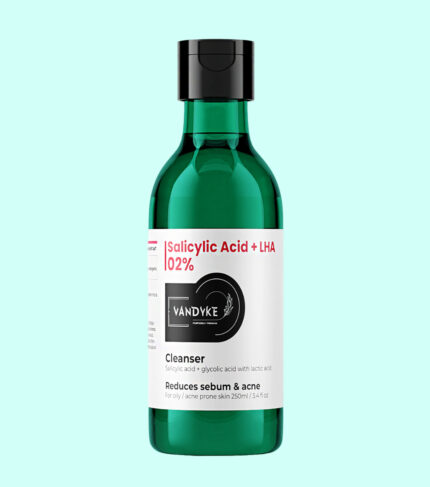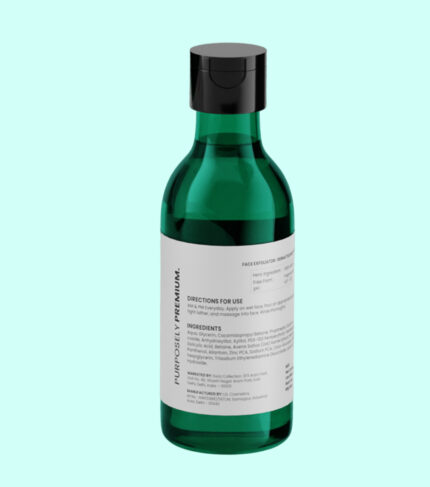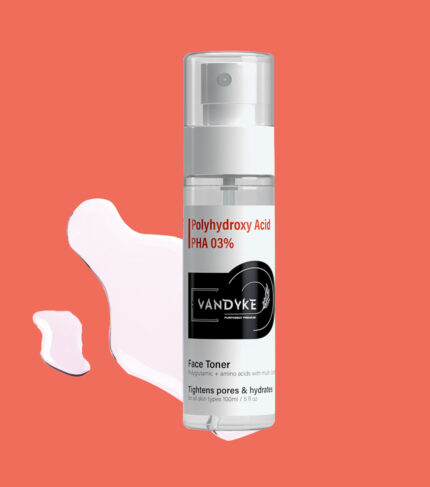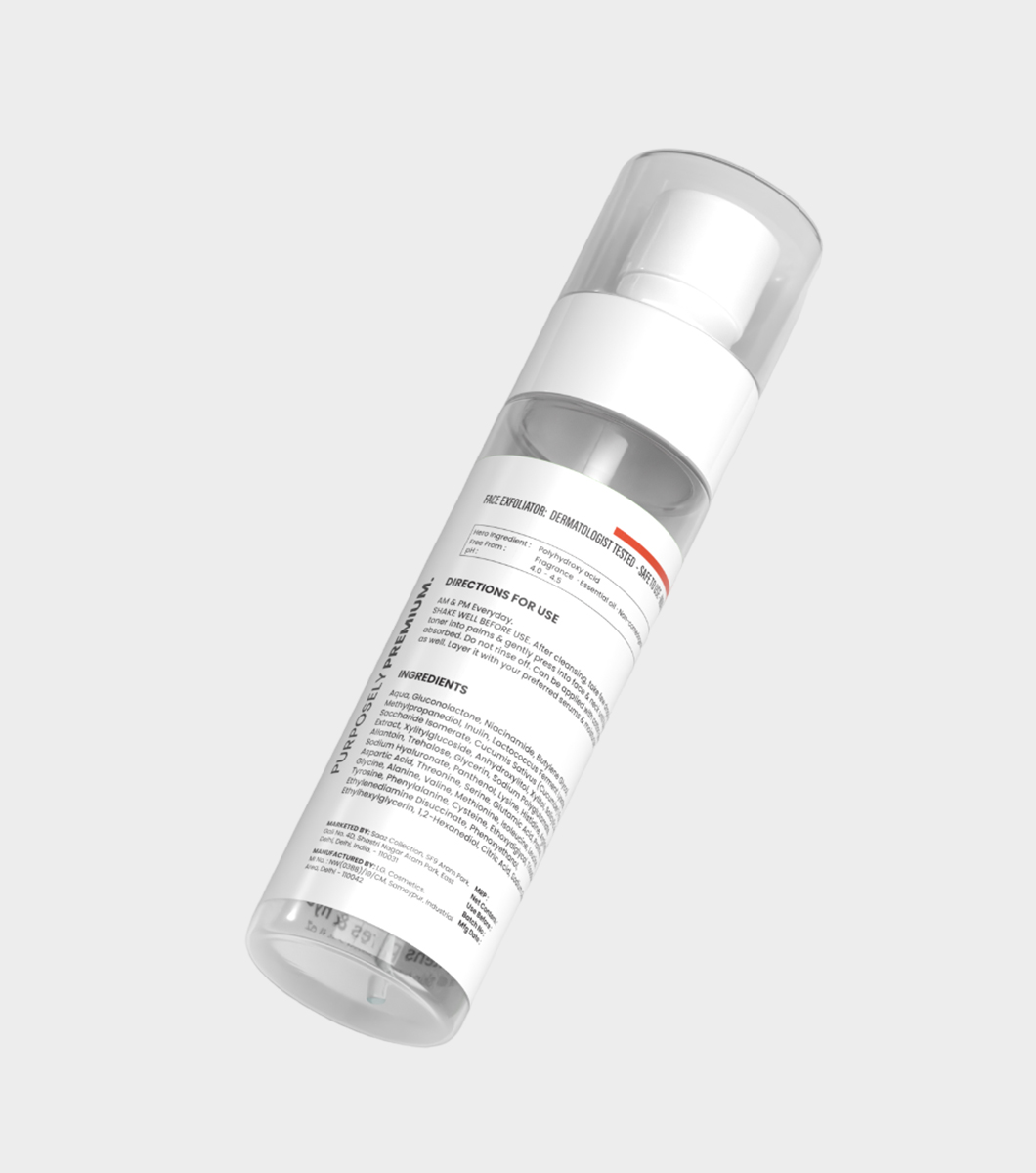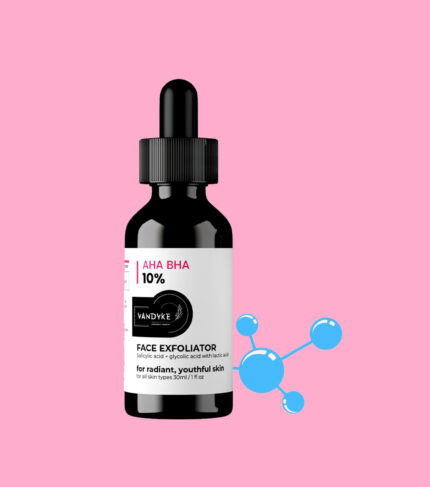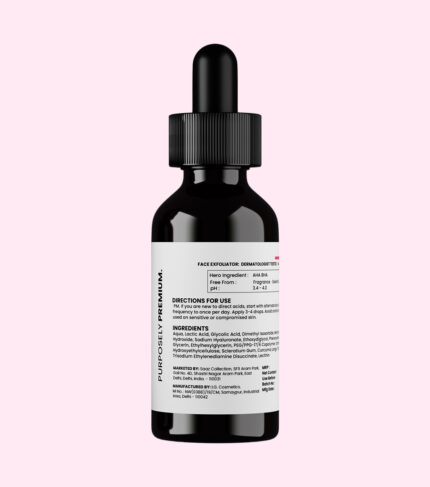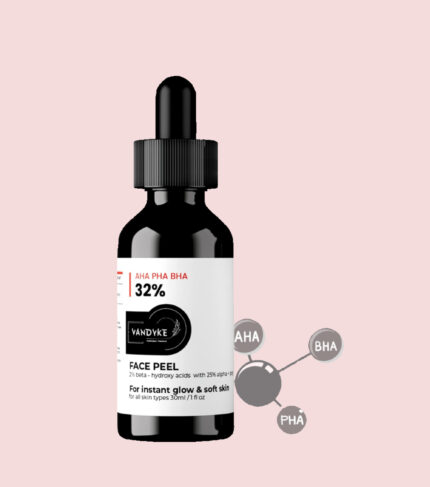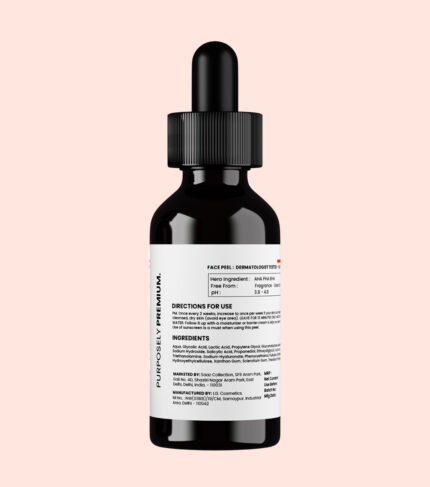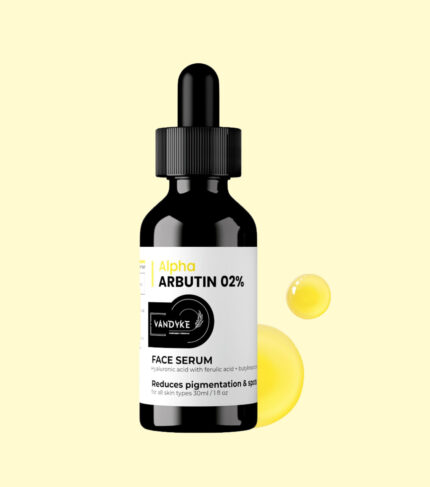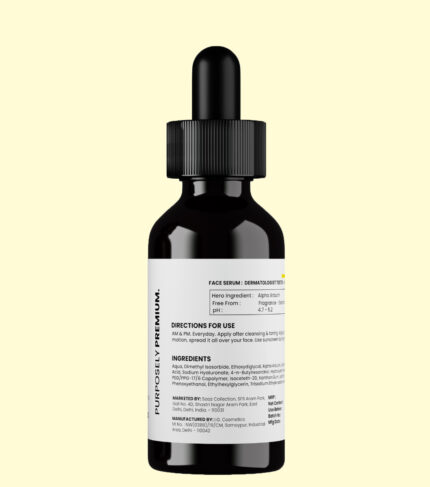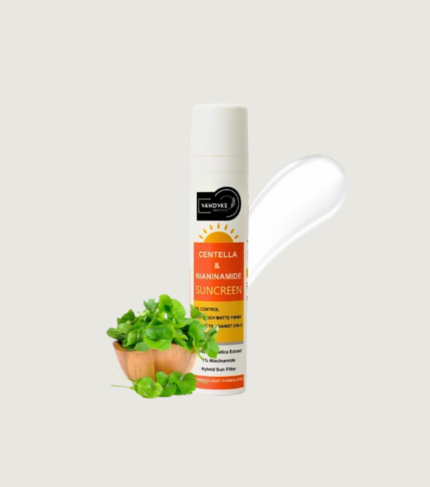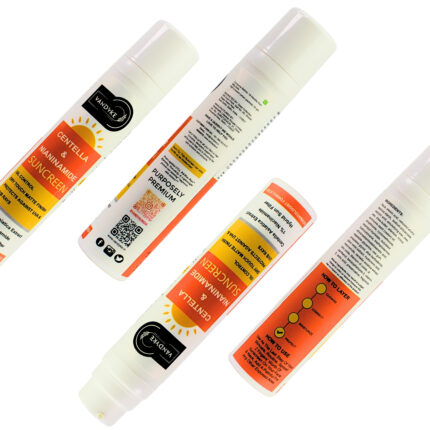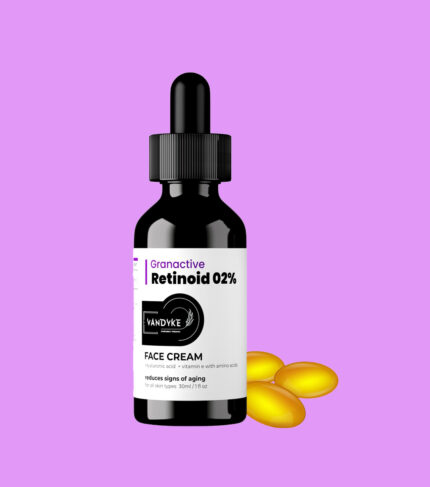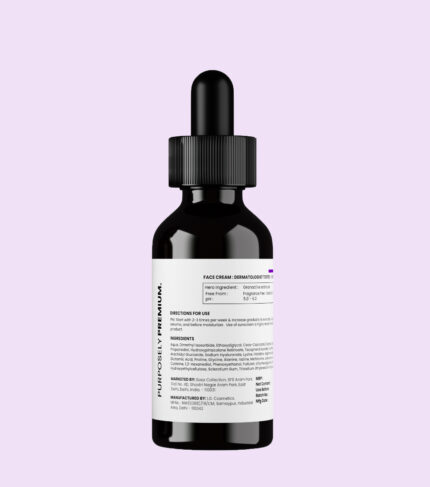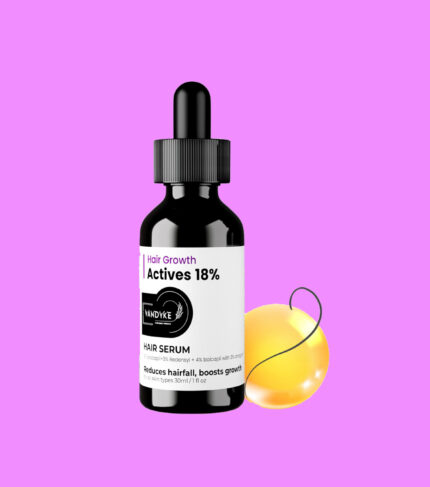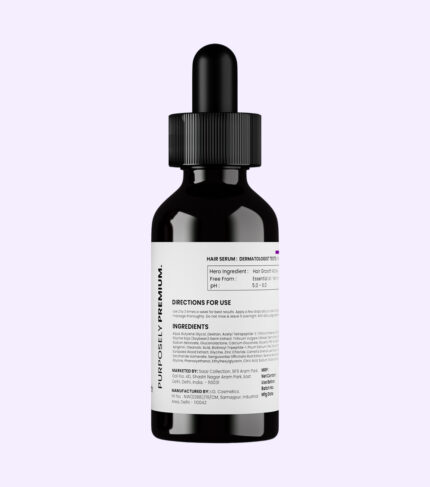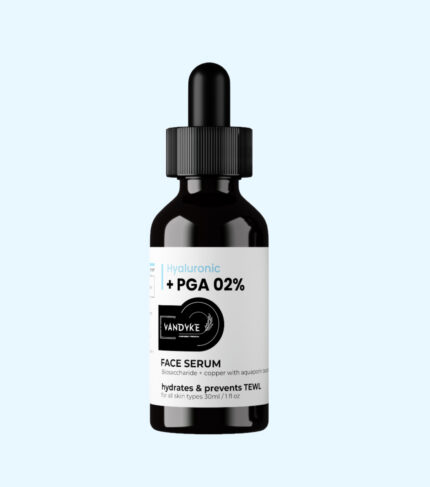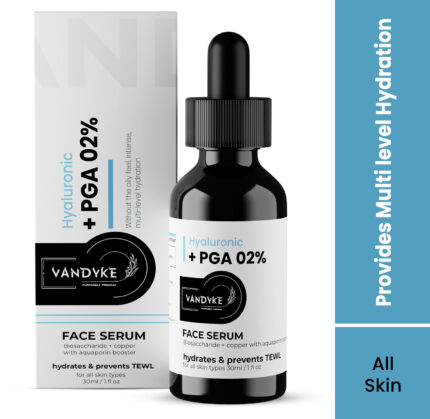Azelaic Acid vs Glycolic Acid Choosing the Ideal Exfoliant for Your Skin Type
Azelaic Acid vs Glycolic Acid: Achieving smooth, radiant skin is a goal for many, and it often involves exfoliation – the process of removing dead skin cells to reveal a fresher complexion. Two popular exfoliants in the skincare world are Azelaic Acid and Glycolic Acid. Each offers unique benefits and caters to different skin types and concerns. In this comprehensive guide, Vandyke will delve deep into the characteristics, benefits, and considerations for each of these exfoliants, helping you determine which one is right for your skin type and goals.
What is Azelaic Acid?
Azelaic acid is a dicarboxylic acid that occurs naturally in cereals including rye, barley, and wheat. It is created synthetically and used in skincare to treat a variety of skin problems.
Benefits of Azelaic Acid
- Acne Treatment
Due to its significant anti-inflammatory and antibacterial effects, azelaic acid is a successful acne therapy. It lessens redness, irritation, and the growth of microorganisms that cause acne.
- Hyperpigmentation
Dark spots, post-inflammatory hyperpigmentation (PIH), and melasma can all be lightened with azelaic acid. Tyrosinase, an enzyme essential for the creation of melanin, is inhibited by it.
- Rosacea Management
The symptoms of rosacea are frequently treated with this acid. It can lessen the inflammation, papules, and pustules brought on by this skin ailment.
- Gentle Exfoliation
Mild exfoliation provided by azelaic acid helps to clear clogged pores, smooth out rough skin, and even out skin tone.
- Less Irritating
Azelaic Acid is ideal for sensitive skin types since it is less prone to irritate or induce sensitivity than certain other active components.
What is Glycolic Acid?
Glycolic Acid is part of the alpha hydroxy acid (AHA) family and is derived from sugarcane. It’s well-known for its ability to exfoliate the skin by breaking down the bonds between dead skin cells.
Benefits of Glycolic Acid
- Exfoliation
Glycolic Acid is a powerful exfoliant that removes dead skin cells, leading to smoother and brighter skin.
- Anti-Aging
It increases collagen synthesis, which lessens the visibility of fine lines and wrinkles.
- Hyperpigmentation
Glycolic Acid can fade dark spots, improve skin texture, and even out skin tone.
- Acne Control
By unclogging pores and reducing oiliness, Glycolic Acid can help prevent and treat acne breakouts.
- Enhanced Product Absorption
Regular use of Glycolic Acid can improve the absorption of other skincare products, making them more effective.
How to Choose Between Azelaic Acid and Glycolic Acid
The choice between Azelaic Acid and Glycolic Acid depends on your specific skin type, concerns, and goals. Here are some considerations to help you make an informed choice:
Choose Azelaic Acid If
- You have sensitive or easily irritated skin.
- Acne and redness are primary concerns.
- Hyperpigmentation, melasma, or uneven skin tone needs addressing.
- You prefer a milder exfoliant without the risk of excessive dryness or peeling.
Opt for Glycolic Acid If
- You have normal to oily skin that can tolerate stronger exfoliation.
- Fine lines, wrinkles, or signs of aging are your primary concerns.
- You’re looking for a more intense exfoliation to improve skin texture and brightness.
- You want to enhance the absorption of other skincare products.
Usage Tips for Both Exfoliants
Whether you choose Azelaic Acid or Glycolic Acid, it’s essential to use them correctly:
- Start Slowly
Start with a lesser concentration or frequency when incorporating a new exfoliant into your routine to give your skin time to acclimatise.
- Use Sunscreen
Both glycolic acid and azelaic acid make your skin more sensitive to the sun. It’s crucial to use sunscreen every day to protect your skin from UV rays.
-
Moisturize
Using a moisturizer is very important for your skin. And it is also very important for you to choose a moiturizer that is suitable for your skin type. If your skin is oily then vandyke suggest you to use vandyke spicalm 03% moisturizer and if your skin is dry then vandyke suggest you to use vandyke marula oil 05% moisturizer for your skin.
- Consult a Professional
Consult a dermatologist or skin care expert for personalised guidance if you’re unsure of which exfoliator is best for you or have certain skin issues.
Azelaic Acid vs. Glycolic Acid
Now, let’s dive deeper into the world of these two exfoliants, exploring their characteristics, benefits, and usage in detail.
Azelaic Acid
Targeted Skin Concerns
- Acne and Breakouts
- Redness and Rosacea
- Hyperpigmentation, including Melasma
- Sensitive Skin
Mechanism of Action
- Reduces inflammation and bacterial growth in acne.
- Inhibits melanin production, addressing hyperpigmentation.
- Strengthens the skin barrier.
Skin Type Compatibility
- All skin types, especially sensitive skin.
- Suitable for those who can’t tolerate stronger acids.
Exfoliation Level
- Mild to moderate exfoliation.
- Less likely to cause dryness or peeling.
Usage Frequency
- Can be used daily or as directed by a dermatologist.
Best Practices
- Apply after cleansing, before moisturizer.
- Suitable for morning or evening use.
- Follow with sunscreen during the day.
Product Formulations
- Available in creams, gels, and serums.
Glycolic Acid
Targeted Skin Concerns
– Dull Skin Texture
– Fine Lines and Wrinkles
– Hyperpigmentation
– Acne and Clogged Pores
Mechanism of Action
– Penetrates skin deeply for effective exfoliation.
– Promotes collagen synthesis for anti-aging effects.
– Improves skin texture and tone.
Skin Type Compatibility
– Best for skin types with mild to greasy tan. It might not be good for dry or sensitive skin.
Exfoliation Level
– Strong exfoliation.
– May cause dryness, peeling, or sensitivity if used excessively.
Usage Frequency
– Begin once or twice a week and increase progressively.
– If your skin is sensitive, stay away from daily use.
Best Practices
– Apply after cleansing, before moisturizer.
– Evening use is recommended.
– Apply sunscreen after during the day.
Product Formulations
– Available in various concentrations, including toners, serums, and peels.
Why choose vandyke AHA BHA 10%?
Introducing AHA BHA 10% – Vandyke, a powerful yet gentle exfoliating solution designed to rejuvenate your skin and reveal a fresh, radiant complexion. This unique formula combines the benefits of two alpha hydroxy acids (AHAs), Glycolic Acid and Lactic Acid, with the potent beta hydroxy acid (BHA), Salicylic Acid. These carefully balanced ingredients work in harmony to penetrate the skin’s surface, breaking down and absorbing dead skin cells, unclogging pores, and flushing out skin debris and oils.
AHA BHA 10% – Vandyke is a lightweight solution that effortlessly sinks into the skin, promoting cell renewal in both the epidermis and dermis layers. Unlike harsh exfoliants, it ensures your skin stays hydrated and maintains a soft, plump, and healthy appearance, thanks to the inclusion of Hyaluronic Acid.
Conclusion
In the Azelaic Acid vs. Glycolic Acid battle, the winner depends on your skin type, concerns, and desired level of exfoliation. Azelaic Acid shines for sensitive skin, acne-prone individuals, and those tackling hyperpigmentation or rosacea. Its gentle exfoliation offers significant benefits without the risk of excessive dryness.
On the other hand, Glycolic Acid is the go-to choice for those seeking intense exfoliation to combat fine lines, wrinkles, and stubborn hyperpigmentation. However, it’s essential to approach it with caution, especially if you have sensitive or dry skin.
Remember, consistency is key when using exfoliants. And regardless of your choice, diligent sunscreen application is crucial to protect your newly exfoliated skin from UV damage. When in doubt, seek guidance from a dermatologist or skin care professional to create a personalized skincare routine that caters to your unique needs and goals.
FAQs
What is Azelaic Acid, and how does it work?
Azelaic Acid is a naturally occurring acid found in grains, and in skincare, it’s used to address concerns like acne, hyperpigmentation, and rosacea. It works by reducing inflammation, inhibiting melanin production, and strengthening the skin barrier.
What are the benefits of using Azelaic Acid?
Azelaic Acid offers several benefits, including treating acne, reducing redness and inflammation, fading dark spots and hyperpigmentation, managing rosacea symptoms, and providing gentle exfoliation.
Who should choose Azelaic Acid as their exfoliant?
Azelaic Acid is an excellent choice for individuals with sensitive or easily irritated skin, those dealing with acne and redness, and those looking to address hyperpigmentation or uneven skin tone. It’s also suitable for those who prefer a milder exfoliant.
What is Glycolic Acid, and what are its benefits?
Alpha hydroxy acid (AHA) glycolic acid is generated from sugarcane. It increases collagen synthesis for anti-aging effects, lightens hyperpigmentation, exfoliates the skin for smoother, brighter skin, and aids in acne control.
Who should opt for Glycolic Acid as their exfoliant?
Glycolic Acid is ideal for individuals with normal to oily skin who can tolerate stronger exfoliation. It’s especially beneficial for those targeting fine lines, wrinkles, and stubborn hyperpigmentation, and those looking to enhance the absorption of other skincare products.
What are the best practices for using both Azelaic Acid and Glycolic Acid?
It’s essential to start slowly when incorporating these exfoliants into your routine, use sunscreen daily, and moisturize to combat potential dryness or irritation. Consulting a dermatologist or skincare professional for personalized advice is also recommended.
What are the key differences between Azelaic Acid and Glycolic Acid?
Azelaic Acid provides milder exfoliation and is suitable for sensitive skin, while Glycolic Acid offers stronger exfoliation and is more effective for addressing signs of aging and enhancing skin texture.
Can I use Azelaic Acid and Glycolic Acid together in my skincare routine?
While it’s possible to use both exfoliants, it’s essential to do so cautiously and under professional guidance, as combining them may increase the risk of irritation or over-exfoliation.
What is AHA BHA 10% – Vandyke, and why is it recommended?
AHA BHA 10% – Vandyke is a potent exfoliating solution combining Glycolic Acid, Lactic Acid, and Salicylic Acid. It helps unclog pores, remove dead skin cells, and improve skin texture. It’s recommended for those seeking a balanced exfoliation experience.
Is it necessary to use sunscreen when using Azelaic Acid or Glycolic Acid?
Yes, it’s crucial to use sunscreen daily when using both Azelaic Acid and Glycolic Acid, as they can make your skin more sensitive to UV damage.
Choose vandyke skin care tips and vandyke skin care products because we are;
“Purposely Premium”

